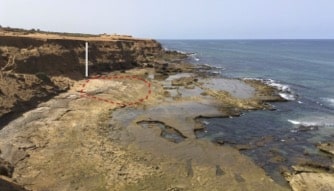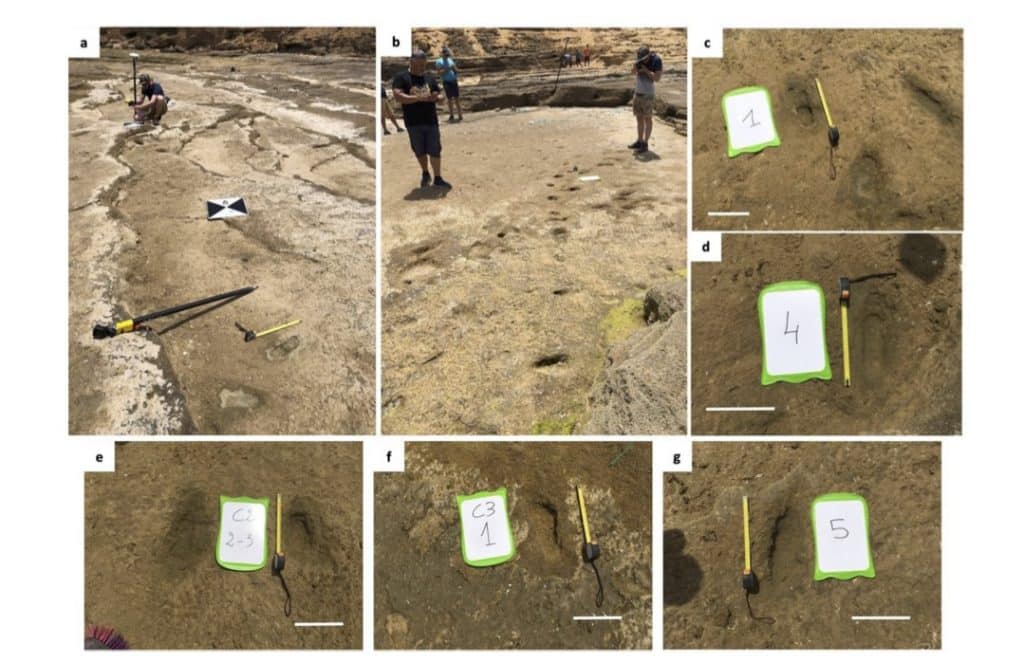The discovery, on a beach in north-west Morocco, of the oldest human footprints in North Africa and the southern Mediterranean.
In a study published on 22 January 2024 in the journal Scientific Reports (Nature portfolio), an international research team led by the Université Bretagne Sud, in partnership with CEREGE and other university laboratories, has presented the oldest known human footprints in North Africa and the southern Mediterranean.
The 85 human footprints, dating back some 90,000 years, were discovered on a rocky beach in Larache on the north-west coast of Morocco. The footprints, those of Homo sapiens, were left by at least 5 individuals, including children, adolescents and adults. They are mainly oriented towards the sea and give a striking image of what could probably have been the search for marine resources by these Homo Sapiens who lived on or along the Larache coast.
These imprints were left on the seaward side of a sandy bar that made up the upper part of the intertidal beach - a location that probably corresponded to the limit of the swash zone under spring tide conditions. In this way, they were temporarily preserved by a crust of salt before being buried by new sedimentary deposits before the sedimentary solidification process began, according to Edward ANTHONY (CEREGE).
The Larache footprint site dates back to 90.3 ± 7.6 ka and is one of the largest and best-preserved Upper Pleistocene trace sites in the world, and the only one documented in North Africa and the southern Mediterranean. North Africa, and Morocco in particular, yielded the first occurrences of Homo sapiens, notably with the Jebel Irhoud fossils.
The discovery of the Larache footprints is further proof of the importance of North Africa, and the Moroccan region in particular, in the evolution of Homo sapiens. Further work is currently underway to analyse dozens of other traces found at the site, in order to gain a better understanding of the size of the group of Homo sapiens found there, and also to contribute to our understanding of the palaeoenvironmental conditions that prevailed during the Late Pleistocene.
For more information
Scientific Reports23 January 2024
Infuse web magazine AMUJanuary 2024
Sedrati, M., Morales, J.A., Duveau, J., Anthony, E. et al. A Late Pleistocene hominin footprint site on the North African coast of Morocco. Sci Rep 14, 1962 (2024).



